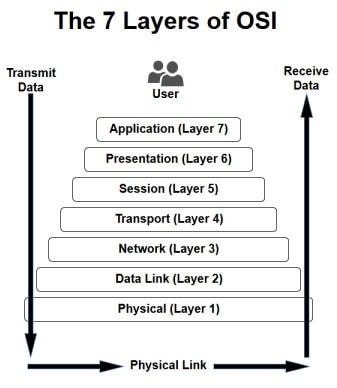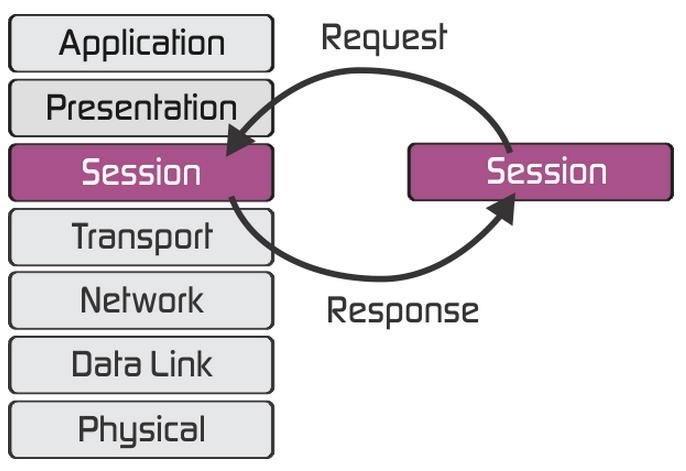































In the field of computer networking, layering was developed to adapt to the ever-changing technology landscape. Each layer in a networking model has a specific function and passes information up and down to the next layer as data is processed.
The OSI (Open System Interconnection) network model consists of seven layers, each with its own role in the network hierarchy.

1. Physical Layer: Handles hardware-level communication services.
2. Data Link Layer: Controls data transfer on a single link.
3. Network Layer: Defines packet transport, logical addresses, routing, and learning routes.
4. Transport Layer: Manages error recovery and multiplexes application data streams on the same host.
5. Session Layer: Focuses on session establishment, control, and termination, including bidirectional message management.
6. Presentation Layer: Defines data format and encryption.
7. Application Layer: Manages communication services for applications.
The session layer, the fifth layer in the OSI model, builds on the services provided by the transport layer. It allows applications to establish and maintain sessions and synchronize them. The session layer also allows communication sessions to resume from a checkpoint in case of failure, which is important for sending large files.

Functions of the session layer include:
- Establishing a connection between two peer session service users.
- Mapping session addresses to shipping addresses.
- Selecting Quality of Service parameters.
- Negotiating session parameters.
- Identifying each session connection.
- Transmitting limited transparent user data.
During the data transfer phase, organized and synchronized data transmission takes place between two session users. The user data unit is called SSDU, and the protocol data unit is called SPDU.
Connection release is achieved through various functional units, including ordered release, discarded, and limited transparent user data transfer.
To enable negotiation during the session establishment phase and reference by other international standards, twelve functional units are defined. Each system can select a subset of session services based on its unique needs and circumstances.
There are several session layer protocols used in networking, such as ADSP, ASP, H.245, ISO-SP, iSNS, L2F, L2TP, NetBIOS, PAP, and PPTP.
If you want to explore networking solutions and maximize the potential of your network infrastructure, visit Hi-Network.com. Our platform offers a wide range of networking products and solutions tailored to your specific requirements.
 Hot Tags :
network
Hot Tags :
network